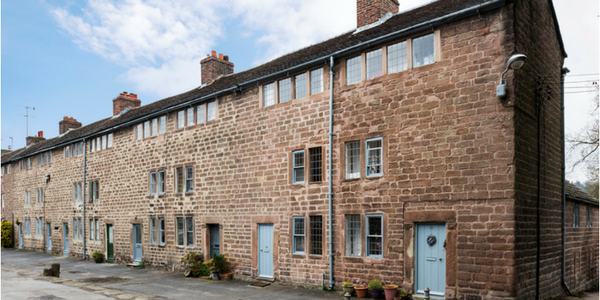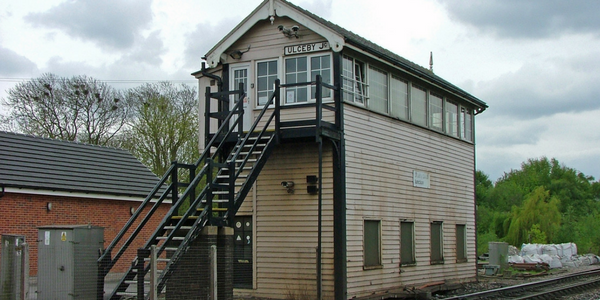At an event hosted by our Patron HRH The Prince of Wales in 2016, we announced our intention to target particularly neglected building categories.
For 50 years we have been rescuing crumbling and collapsing buildings that span Britain’s social, military and economic history. Many of these ‘Landmarks’ have been unconventional and unusual. They include the world's first industrial housing at Cromford in Derbyshire, rescued from demolition in the 1970s; the derelict engine house of a Cornish arsenic mine and a decaying Martello Tower built in 1812 to counter the threat of Napoleon.
 North Street at Cromford, Derbyshire
North Street at Cromford, Derbyshire
We have identified some challenging categories of buildings that contain threatened yet inspirational pieces of Britain’s past that the nation is in danger of losing forever. These are the building types that often proliferate on the Buildings At Risk registers because they are the most ‘difficult’ to save.
These categories are:
• 20th-century military structures such as control towers or bunkers
• Small and significant industrial buildings
• Seaside and leisure buildings such as pavilions and villas
• Transport and communications structures like signal boxes and semaphore towers
• Remote and unchanged rural domestic houses and crofts
• Buildings whose restoration may contribute to urban regeneration, especially in the Midlands and Northern cities.
We firmly believe that such buildings can become enjoyable places to stay, and so be saved for the nation. We will always be interested in the kinds of buildings at risk with which the charity is more normally associated, such as follies or towers, but we are keen to see them joined by other building types.
 Ulceby Junction Signal Box, demolished in 2015. Photo copyright to James Wells
Ulceby Junction Signal Box, demolished in 2015. Photo copyright to James Wells
If you wish to propose a building please see our how we acquire buildings, after which please contact Caroline Stanford, our Historian, at [email protected]. We look for buildings that are of great importance historically or architecturally; that are physically at risk or in dire need of a new use to survive, and that are places where people will want to spend a holiday. We typically take on two or three a year and it may take several years of fundraising to secure a buildings future. Please also note that we do not buy buildings except in exceptional cases.